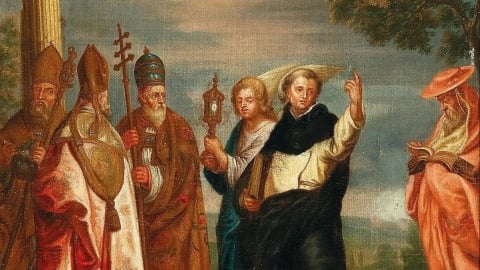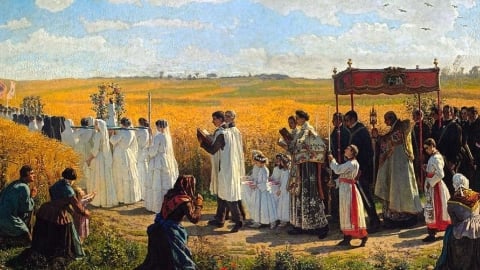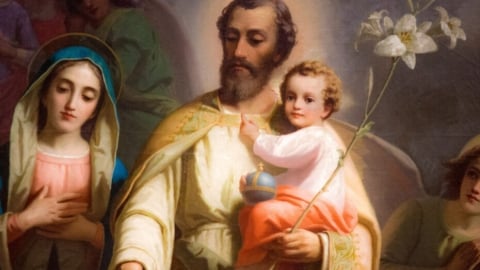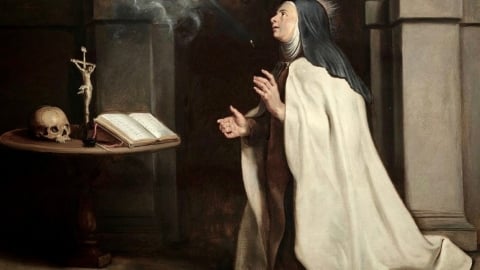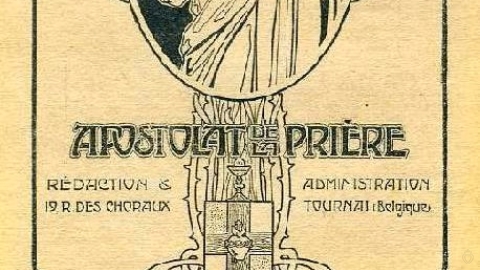Catholic Spain and Religious Freedom

Religious liberty, as taught by Dignitatis Humanae (the Vatican II declaration), undermines the Catholic religion. Here is an example of how, within fifteen years, a Catholic state can be utterly transformed from a Catholic state into a completely and legally 'godless' state. The original article by Abbé Benoît Espinasse, titled "L’Espagne Catholique face à la liberté religieuse," is provided in a condensed form for our readers.
The Situation Before Dignitatis Humanæ
In 1965, Spain was one of only two confessional countries whose constitutional laws contained legal restrictions on the freedom of non-Catholic cults, in conformity with what ecclesiastical public law demanded. Besides the state's official religion, other cults were merely tolerated. The Fuero de los Españoles, the state's fundamental law adopted on July 17, 1945, only allowed their private practice and also prohibited any propaganda activities.
At the foundation of this legislation was the recognition of society's duties towards God as a society. In a message to the Cortes, Franco not only reminded that the 1953 concordat did justice to Spain's secular tradition but also merely recognized the Divine Law, to which both individuals and the nation are bound. And according to Cardinal Ottaviani, this is the most perfect concordat in the entire history of the church (… est huius generis concordatorum in tota Ecclesiae historia perfectissimum)
The First Adaptations Following the Vatican II Council
After the ‘promulgation of ‘Dignitatis Humanae’ Spain adopted on January 10, 1967, a new Organic Law of the State, ratified by referendum, modifying the provisions of paragraph 20 of article 6 of the Fuero of 1945, which now stipulates that 'the State shall assume the protection of religious freedom, which will be guaranteed by an effective legal guardianship safeguarding both morals and public order'. This paved the way for a comprehensive review of previous legislation. Which was done the same year, by the law of June 27, 1967, regulating 'the exercise of the civil right to religious freedom’. "It recognized the right to religious freedom "based on the dignity of the human person" and ensured "immunity from any coercion in the legitimate exercise of this right" (art. 1). Non-Catholic confessions were invited to form associations, governed according to their own statutes, which recognized legal personality (art. 13, § 14). Henceforth, they could freely practice public worship (art. 21). They would also have the ability to create centers for teaching their followers and training their ministers, if their number justifies it (art. 29, § 30).
Subsequent Measures
The 1967 law maintained a confessional state. This aspect would disappear in subsequent laws; here are the key stages. The initiative came from the Spanish state, which consulted the Church. The bishops provided their opinion in an official document from 1973, "The Church and the Political Community." Archbishop Minnerath summarizes it as follows: "The most important thing, in the bishops' eyes, is that the law on religious freedom continues to be applied. There's even a nuanced reluctance about maintaining the state's confessional nature," with the bishops highlighting the risk of inconsistency: "proclaiming itself a Catholic state" and "passing a law allowing abortion (L’Eglise catholique face aux Etats, Cerf, 2012).
A series of agreements were signed between the Holy See and the Spanish state to replace the 1953 Concordat. The 1976 one "presents itself as a willingness to adapt to the profound changes not only in the Church's teachings but also in Spanish legislation." Explicit reference is made to the need to adapt to the novelty introduced by the council: "considering that the Vatican II Council, for its part, established as fundamental principles that should govern the relations between the political community and the Church, both the mutual independence of the two parties, in their respective order, and a healthy collaboration between them, affirmed religious freedom as a human right, a right that must be recognized in the legal organization of society... [the Holy See and the Spanish government] find it necessary to revise the 1953 concordat." The 1953 concordat defined the Church as a "perfect society, with all that the notion implies in ecclesiastical public law"; in the 1979 agreement, "the first striking thing in this wording is that the Church-State relationship no longer seems to be on an equal legal footing. The State no longer explicitly declares that the Church has the status of a sovereign society.”
In 1980, an organic law on religious freedom repealed and replaced that of June 1967 to adapt to the new constitution. "This legislative text is fully consistent with the state's religious neutrality, respectful of the fundamental right of individuals and associations to religious freedom... Nothing in this text suggests that Spain has ever been and remains overwhelmingly Catholic. It only mentions anonymous 'Churches, denominations, and religious communities,' free to profess their 'beliefs' within the limits of public order respect. They can operate in Spain 'provided they apply for registration in the Public Register created for this purpose at the Ministry of Justice.'"
The synthesis of this evolution initiated by the conciliar document is enlightening. "The journey made can be measured.
- Until 1967, Spain was a Catholic confessional state that practiced 'tolerance' of other cults.
- In 1967, it renounced any legal discrimination against non-Catholics, while remaining a confessional state.
- Since the 1978 Constitution, the State no longer declares itself bound to any cult and no longer mentions the special position that the Catholic religion occupies in the nation's identity.
- Finally, in 1980, the Catholic Church was almost asked to go register, alongside any sect, for legal existence."
Conclusion
The conciliar declaration Dignitatis Humanae was thus received by all parties involved in the concrete implementation of ecclesiastical public law (the Holy See, bishops, and State) as a radical novelty requiring a complete overhaul of their relations. "The Church is reduced to the common right recognized by the State to all religions; by an unspeakable impiety, it finds itself on the same level as heresy, perfidy, and idolatry." It is against this legal apostasy of society that Archbishop Lefebvre stood up (cf. They Have Uncrowned Him).
Abbé Benoît Espinasse FSSPX
